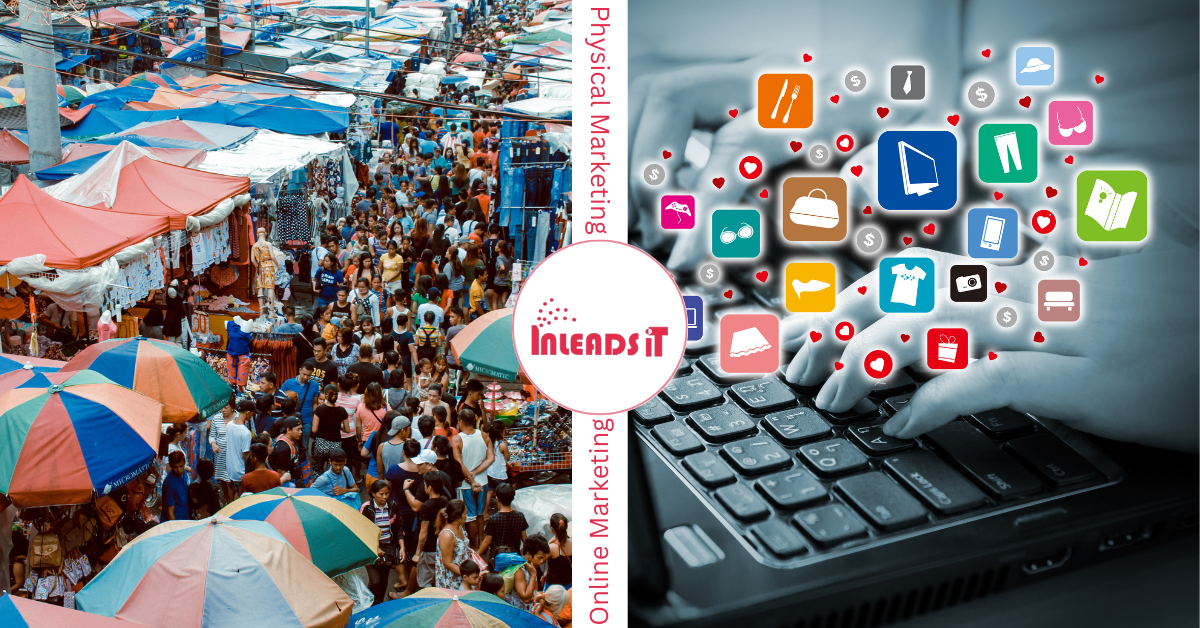
Email marketing has become an integral part of any successful marketing strategy, allowing businesses to connect with their audience directly and effectively. However, sending emails alone is not enough to achieve desired results. One crucial metric that determines the effectiveness of email campaigns is the open rate – the percentage of recipients who open the emails they receive.
In this blog post, we will explore the importance of email marketing open rates and why improving them is crucial for business success. Open rates provide valuable insights into the engagement and interest levels of your audience. They indicate whether your emails are capturing attention, resonating with recipients, and ultimately driving them to take the desired action.
Importance of email marketing open rates
- Measurement of audience engagement: Open rates provide a tangible metric to measure how engaged your audience is with your email content. A high open rate indicates that your subscribers find your emails interesting and valuable, while a low open rate may indicate a need for improvement.
- Impact on conversions and revenue: The success of your email marketing efforts depends on conversions and generating revenue. When recipients open your emails, they have an opportunity to engage with your content, click on links, and potentially make a purchase or take the desired action. Improving open rates can directly impact your conversion rates and revenue.
- Building and nurturing customer relationships: Email marketing allows you to build and nurture relationships with your audience. By improving open rates, you increase the chances of your messages being seen and read, which fosters a sense of trust and credibility. Regularly connecting with your subscribers through engaging emails can strengthen your bond with them.
Why improving open rates is crucial for business success
- Maximize the ROI of email marketing: Email marketing is a cost-effective strategy with a high return on investment (ROI). However, to maximize the ROI, it is essential to have a high open rate. By improving open rates, you increase the chances of your emails reaching their intended recipients and driving the desired actions.
- Increase website traffic and engagement: When recipients open your emails, they often click on links that lead them to your website or landing pages. By improving open rates, you can generate more traffic to your website, increase engagement with your content, and potentially convert visitors into customers.
- Enhance brand visibility and recognition: Consistently high open rates indicate that your brand is making a positive impression and gaining visibility in the minds of your audience. As recipients repeatedly open your emails and engage with your content, they become more familiar with your brand, leading to increased recognition and trust.
Understanding the Factors Affecting Email Open Rates
Subject lines and their impact:
- Crafting compelling subject lines: Learn techniques to create subject lines that grab attention and pique curiosity. Use concise, clear language and experiment with personalization, urgency, and relevance to increase open rates.
- Avoiding spam trigger words: Discover common words and phrases that may trigger spam filters and reduce email deliverability. By steering clear of these terms, you can improve the chances of your emails reaching your subscribers’ inboxes.
Sender name and email address:
- Building trust and credibility: Understand the importance of establishing trust with your subscribers. Use a recognizable sender name and email address that aligns with your brand and builds confidence in the legitimacy of your emails.
- Personalizing sender information: Explore the benefits of personalizing the sender information. Adding a personal touch, such as using a real name or a team member’s name, can enhance engagement and foster a sense of connection with your audience.
Timing and frequency of emails:
- Finding the optimal time to send emails: Learn how to identify the best time to send your emails based on your target audience’s preferences and behavior. Consider factors such as time zones, industry norms, and customer data to maximize open rates.
- Avoiding over-sending or under-sending: Strike a balance between staying in touch with your subscribers and avoiding email fatigue. Understand your audience’s expectations and establish a consistent email frequency that keeps them engaged without overwhelming their inboxes.
Segmenting and Targeting Your Audience
I. Importance of Audience Segmentation:
Audience segmentation involves dividing your email list into distinct groups based on shared characteristics. This approach allows you to tailor your messaging and content to specific segments, resulting in higher relevance and engagement. Here’s why audience segmentation is crucial:
- Improved targeting: By understanding your audience’s unique needs and preferences, you can deliver more relevant content, increasing the chances of capturing their attention.
- Enhanced personalization: Segmenting your audience enables you to craft personalized experiences, fostering stronger connections and loyalty.
- Higher conversion rates: When your email content resonates with recipients on a personal level, they are more likely to take the desired action, leading to increased conversions.
II. Using Customer Data to Segment Your Email List:
To effectively segment your email list, you need valuable customer data. Here are two common types of segmentation techniques you can employ:
A. Demographic Segmentation: Demographic segmentation categorizes subscribers based on their demographic information, such as age, gender, location, or occupation. This type of segmentation provides insights into your audience’s characteristics and allows you to tailor content accordingly. For example:
- Crafting subject lines that resonate with specific age groups or genders.
- Customizing email content based on regional preferences or cultural nuances.
B. Behavioral Segmentation: Behavioral segmentation focuses on subscribers’ actions and behaviors, providing valuable insights into their interests, engagement levels, and purchase history. By analyzing their behavior, you can segment your audience into different groups and deliver highly targeted content. Consider the following strategies:
- Segmenting based on past purchase behavior to recommend relevant products or offer exclusive discounts.
- Tailoring content based on engagement levels, such as targeting highly engaged subscribers with loyalty rewards or special content.
III. Personalizing Content for Different Segments:
Once you’ve segmented your email list, it’s time to craft personalized content that resonates with each segment. Here’s how to make your emails more relevant and engaging:
A. Tailoring Subject Lines and Email Content: Subject lines are the first impression your subscribers have of your email. Tailor subject lines to match the interests and needs of each segment, using personalization techniques like including their name or referencing their past behavior. Additionally, customize the email content to address specific pain points, provide relevant solutions, or showcase products that align with each segment’s preferences.
B. Incorporating Dynamic Content: Dynamic content allows you to display different content blocks within your emails based on each recipient’s segment or preferences. This technique can be highly effective in delivering personalized experiences. For example:
- Showcasing different product recommendations based on past purchases or browsing history.
- Customizing offers or promotions based on segment-specific preferences.
Crafting Compelling Email Content
I. Writing Engaging and Concise Emails
A. Clear and Concise Subject Lines:
- The importance of a captivating subject line
- Keeping subject lines short and focused
- Incorporating personalization and curiosity
B. Attention-Grabbing Introductions:
- Hooking the reader with a strong opening line
- Highlighting the value or benefit of the email
- Using a conversational and engaging tone
C. Focused and Actionable Content:
- Keeping the email content relevant and targeted
- Breaking down information into digestible sections
- Including a clear and specific call-to-action (CTA)
II. Utilizing Visuals and Multimedia
A. Adding Relevant Images or Videos:
- Enhancing the visual appeal of emails
- Choosing high-quality and relevant visuals
- Incorporating videos to convey messages effectively
B. Optimizing File Size and Format:
- Ensuring quick loading times for images and videos
- Compressing images without sacrificing quality
- Utilizing appropriate file formats for compatibility
III. Implementing Strong Call-to-Action (CTA)
A. Using Persuasive Language:
- Creating a sense of urgency and excitement
- Employing action verbs to drive action
- Addressing potential objections or concerns
B. Creating Urgency and Exclusivity:
- Communicating limited-time offers or promotions
- Highlighting exclusive benefits for email recipients
- Utilizing scarcity or countdown techniques
Optimizing for Mobile Devices
I. The Rise of Mobile Email Consumption:
A. Statistics highlighting the prevalence of mobile email usage
B. Understanding the impact of mobile optimization on user experience
C. The correlation between mobile-friendly emails and higher open rates
II. Designing Mobile-Friendly Email Templates:
A. Responsive Design and Readability:
1. Explaining responsive design and its benefits
2. Tips for creating mobile-responsive email templates
a. Using fluid layouts and scalable fonts
b. Optimizing content hierarchy for smaller screens
c. Streamlining text and avoiding long paragraphs
B. Mobile-Friendly CTAs and Buttons:
1. Importance of clear and clickable CTAs
2. Best practices for mobile-friendly CTAs and buttons
a. Using larger, tippable buttons
b. Ensuring sufficient spacing around CTAs
c. Optimizing button text for mobile screens
C. Testing and Previewing Emails on Different Devices:
1. The significance of testing across various devices and email clients
2. Tools and techniques for testing and previewing emails
a. Using email testing services
b. Leveraging device simulators and emulators
c. Enlisting real-user testing and feedback
III. The Impact of Mobile Optimization on Open Rates:
A. The relationship between mobile optimization and user engagement
B. Case studies showcasing improved open rates through mobile optimization
C. Leveraging analytics to measure the impact of mobile optimization
Analyzing and Iterating Based on Data
I. Tracking Email Open Rates and Engagement Metrics:
To improve your email marketing open rates, you need to start by tracking the right metrics. In this section, we’ll discuss the key metrics to monitor and the tools you can use to gather this valuable data. By understanding how your emails are performing, you can make informed decisions to enhance your open rates.
II. Analyzing Data to Identify Trends and Patterns:
Data analysis goes beyond simply tracking metrics. It involves extracting insights and identifying trends and patterns that can guide your email marketing strategies. We’ll explore various techniques and approaches to analyze your email data effectively. By spotting patterns in your audience’s behavior, you can uncover valuable insights to optimize your campaigns.
III. A/B Testing and Optimizing Email Campaigns:
A/B testing is an invaluable technique for improving email open rates. In this section, we’ll delve into the importance of A/B testing and the elements you should focus on when conducting experiments. Specifically, we’ll explore testing subject lines, sender names, and content variations. By testing different elements, you can gain insights into what resonates best with your audience and refine your approach accordingly.
IV. Making Data-Driven Decisions for Improvement:
Once you have gathered data and conducted A/B tests, it’s time to make data-driven decisions to enhance your email campaigns. This section will guide you through the process of interpreting the results and implementing changes based on the insights you’ve gained. By aligning your decision-making with the data, you can continuously optimize your email marketing strategy.
Maintaining a Clean and Engaged Email List
A. Regularly cleaning and updating your email list
- Removing inactive subscribers:
- Identify inactive subscribers based on their lack of engagement (e.g., non-openers, non-clickers).
- Implement a re-engagement campaign targeting these subscribers.
- Consider removing subscribers who remain inactive despite re-engagement efforts.
- Use email marketing tools to automate the identification and removal process.
- Managing bounces and unsubscribes:
- Regularly monitor bounced emails and categorize them as hard bounces (permanent) or soft bounces (temporary).
- Remove email addresses with consistent hard bounces from your list.
- Provide a prominent unsubscribe link in your emails to allow subscribers to opt-out easily.
- Respect unsubscribe requests promptly to maintain a positive sender reputation.
B. Engaging and re-engaging subscribers
- Sending targeted re-engagement campaigns:
- Segment your inactive subscribers and create personalized re-engagement emails.
- Craft compelling subject lines to grab attention and pique interest.
- Remind subscribers of the value they can receive from your emails.
- Offer exclusive discounts, free resources, or special content to entice re-engagement.
- Implement automated workflows to send re-engagement emails at specific intervals.
- Providing valuable incentives or rewards:
- Offer incentives to encourage active engagement and loyalty.
- Provide personalized offers or discounts based on subscriber preferences and behavior.
- Organize contests, giveaways, or loyalty programs to reward active subscribers.
- Consider creating a sense of exclusivity by offering early access or limited-time promotions.
- Monitor the effectiveness of incentives and adapt them based on subscriber response.
Conclusion
In conclusion, improving your email marketing open rates is essential for achieving success in your email campaigns. By implementing the right strategies and focusing on continuous improvement, you can significantly enhance your open rates and maximize the impact of your email marketing efforts.
Throughout this blog post, we have discussed several key strategies to improve email open rates. We explored the importance of crafting compelling subject lines that capture attention and avoid spam triggers. We also highlighted the significance of the sender name and email address, emphasizing the need to build trust and personalize sender information.
Segmenting and targeting your audience based on customer data is another critical aspect of improving open rates. By tailoring your content to different segments, you can deliver more relevant and engaging emails that resonate with your subscribers.
Crafting compelling email content is equally crucial. Writing engaging and concise emails, incorporating visuals and multimedia, and implementing strong call-to-action can significantly impact open rates and encourage higher engagement from your audience.
Furthermore, optimizing your emails for mobile devices is essential in today’s mobile-driven world. Designing mobile-friendly templates and thoroughly testing your emails on different devices can ensure a seamless and enjoyable experience for your subscribers.
Data analysis plays a vital role in improving open rates. By tracking email open rates and engagement metrics, analyzing data to identify trends, and conducting A/B testing, you can make data-driven decisions and continuously optimize your email campaigns for better results.
Maintaining a clean and engaged email list is equally important. Regularly cleaning and updating your list, removing inactive subscribers, and engaging and re-engaging your audience can help you maintain a high-quality list and improve open rates over time.
To sum it up, continuous improvement is key. By consistently implementing these strategies, testing and analyzing your results, and making adjustments accordingly, you can achieve higher email open rates and ultimately drive greater success in your overall email marketing efforts.
Remember, improving your open rates is not a one-time task but an ongoing process. Stay informed about industry trends and best practices, stay connected with your audience, and adapt your strategies as needed. By doing so, you’ll be well on your way to creating impactful email campaigns that capture the attention of your subscribers and drive meaningful results for your business.
FAQ
What is a good email open rate?
A good email open rate can vary depending on the industry and target audience. However, the average open rate across industries is around 20%. Generally, anything above 20% can be considered a good open rate, but it’s essential to benchmark your performance against your specific industry and previous email campaigns.
How can I improve my email subject lines?
Improving email subject lines is crucial for boosting open rates. Here are some tips:
- Keep it concise and compelling: Aim for subject lines that are no longer than 50 characters and create a sense of curiosity or urgency.
- Personalize when possible: Incorporate the recipient’s name or other relevant information to make the email feel personalized and relevant.
- Test different approaches: Experiment with different subject lines, such as asking a question, using humor, or offering a benefit, and analyze the performance to find what resonates with your audience.
Is it important to personalize sender information in emails?
Yes, personalizing sender information can significantly impact open rates. When recipients see a recognizable and trusted sender name and email address, they are more likely to open the email. Use a sender name that represents your brand or a real person within your organization to build trust and credibility.
How frequently should I send emails to my subscribers?
The frequency of sending emails depends on your audience’s preferences and the nature of your business. It’s important to find the right balance. Too few emails may result in your subscribers forgetting about you, while too many can lead to email fatigue and higher unsubscribe rates. Monitor engagement metrics and ask for feedback to determine the optimal frequency for your specific audience.
How can I segment my email list effectively?
To segment your email list effectively, consider the following:
- Demographic segmentation: Divide your audience based on age, location, gender, or other relevant demographics.
- Behavioral segmentation: Group subscribers based on their past interactions, such as purchase history, website visits, or email engagement levels. This allows you to send more targeted and relevant content.
Why is mobile optimization important for email marketing?
Mobile optimization is crucial because a significant portion of email opens and interactions occur on mobile devices. By ensuring your emails are mobile-friendly, with responsive design, legible fonts, and well-placed CTAs, you can provide a seamless user experience and improve open rates on mobile devices.
How can I analyze email campaign data to improve open rates?
Analyzing email campaign data is essential for identifying areas of improvement. Some key metrics to consider are open rates, click-through rates, bounce rates, and conversion rates. Analyze these metrics over time and compare them to industry benchmarks to understand how your campaigns are performing. Use the insights gained to make data-driven decisions and optimize future email campaigns.
Should I remove inactive subscribers from my email list?
Yes, regularly cleaning your email list by removing inactive subscribers is important. Inactive subscribers can drag down your open rates and engagement metrics. Implement a re-engagement campaign to try to win back inactive subscribers. If they still show no interest or engagement, it’s best to remove them from your list to maintain a healthy and engaged subscriber base.








